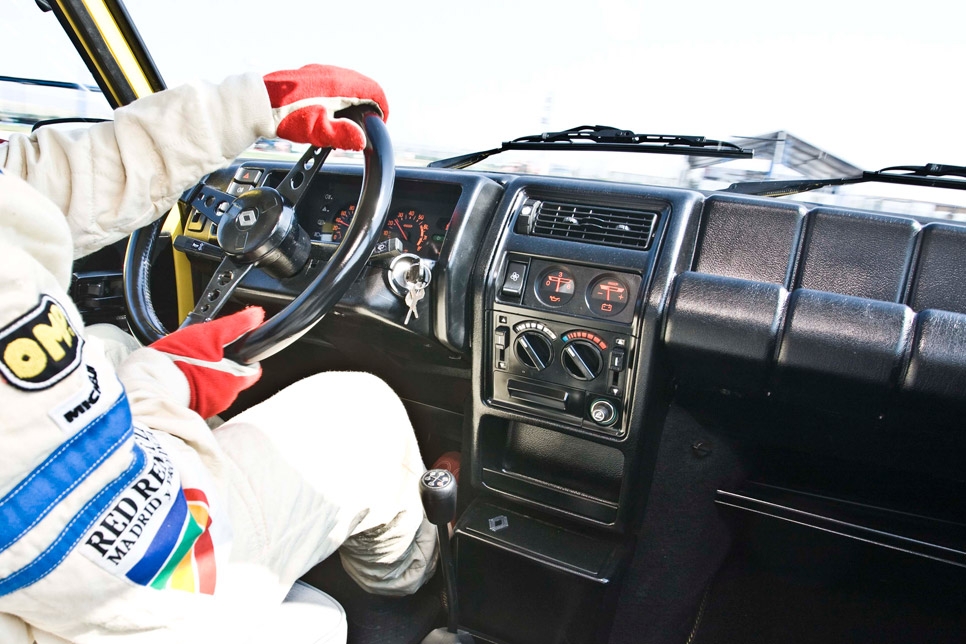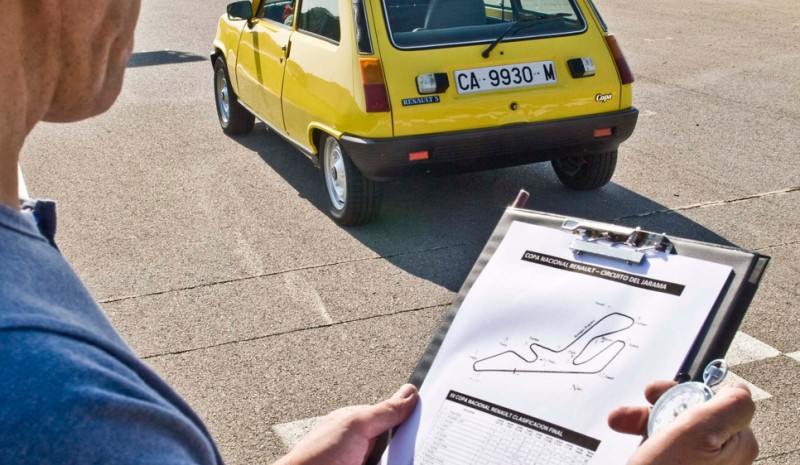classic test: Renault 5 Cup
School young pilots and motorists in general, especially aesthetically R5 revolutionized the segment called ‘B’. Versatile, reliable, modern and relaxed, encouraged Spanish roads and circuits, thanks to the Renault Cup for several decades.
Unlike the 2CV, the Renault 5 It took me longer fully active as a journalist-tester in the automotive theme. In fact, we could even be considered as partial predecessor (because they went to different audiences), the R4, and appeared when I made my debut in this world, yet in the journal ‘Speed’. But the presentation of the R3 / R4, in the French Camargue, did not touch me go, so I had to wait yet another year until a test in Spain, for the first time alternative that Renault had just 2 CV. But when he appeared R5, I believe that early 1972, I was already in AUTOPISTA and presentation, also in France, I touched this time to me, therefore can deal fluently in French and because the few tests that were made then were practically the preserve mine.
This time, the launch took place at the French Brittany, particularly near the town of Lorient, using as a basis a luxury hotel which in turn unfolded in what then was called spa and now turns out to be ‘spa’. If the “incomparable” presentation made an impact among the group of Spanish journalists, no less did the product presented by Renault: R5. Scarcely a year earlier, and in Lanzarote, we had attended the presentation which for many years was his great rival, the Seat 127. Discussions between supporters of both car continued long after the disappearance of both (and still today in some forums), but apart from their virtues, what is no doubt that, aesthetically, the Renault marked a turnabout in design, especially considering we’re talking about cars Segment B.

And, almost forty years ago, line in general and some aesthetic details in particular, posed a real revolution. Very specifically, the shape and positioning of the rear lights were a surprise, because so far used to be, at least in cars of this size, small red dots and amber round, square or slightly rectangular. And watch them integrated in the rear C pillar design, a large vertical dimension (later raised in the ‘restyling’) and located much higher than so far usual, assumed a shock.
Although it was not the only detail that also the headlights were well integrated into the design of the front, and lateral own body, with extensive protections, also it represented a great leap forward in design. After a while, the rear lights have evolved in the direction marked by Renault (Volvo and Mitsubishi were the first to follow), but the R5 has the honor of having replaced what until then were the ‘drivers’ for elements perfectly integrated lighting design, and not as a mandatory added.
Technically, R4 R5 derived from, refering to center-longitudinal engine, with the box cantilevered differential changes ahead. It was an exclusive introduction of the brand, which also found its place in both the R6 and the R16, a couple of cars segments located one two above, respectively. This implementation had the advantage of offering a sharing balanced weight, but subtracting drawback habitability; Moreover, the situation of the gearbox led to the lever was in the same position as in the Citroen 2 CV. A high percentage of Spanish motorists at that time, added all cars of the two brands with such an arrangement, conducted with so peculiar control system transmission; system that has recently returned in part, with some lever, the operation of a control cables and not by bars, leaving the center of the dashboard.

the R5 It was a comfortable car suspension, although He did not reach the degree of balancing the Citroën; Moreover, from the beginning and he led the “Sierra” engine five main bearings, a detail that until then was not too common. But, as I say, and even gave much game as reliable, safe and comfortable road holding vehicle, the impact of R5, especially in the first years after its launch, came much so staff, striking and modern in its line, that for a long time remained the most advanced was between the small cars, as it was then called B-segment cars
A version of particular importance It was called R5 Cup, although later he appeared a higher power R5 Turbo by overfeeding, but whose mechanical derived from other already known (R11 Turbo) and used the flat head of parallel valves.
Because the significance of the ‘Cup’, apart from serve as a basis for a few years of single-brand competition (Hence its name), it is thanks to him finally he reached the Spanish market famed Gordini hemispherical head with side camshaft but double rocker arm, that articulated in the opposite direction. Launched with primitive R8 Gordini and then the Gordini R12 and R16 in the TS, performance was clearly superior to the flat butt. Anecdotally, I can say that chased him for well over a year to get a test unit until suppose that tiredly in Fasa-Renault decided to put a drive in this park. Most colleagues neither known nor, therefore, never thanked me, but thanks to my stubbornness tested.



